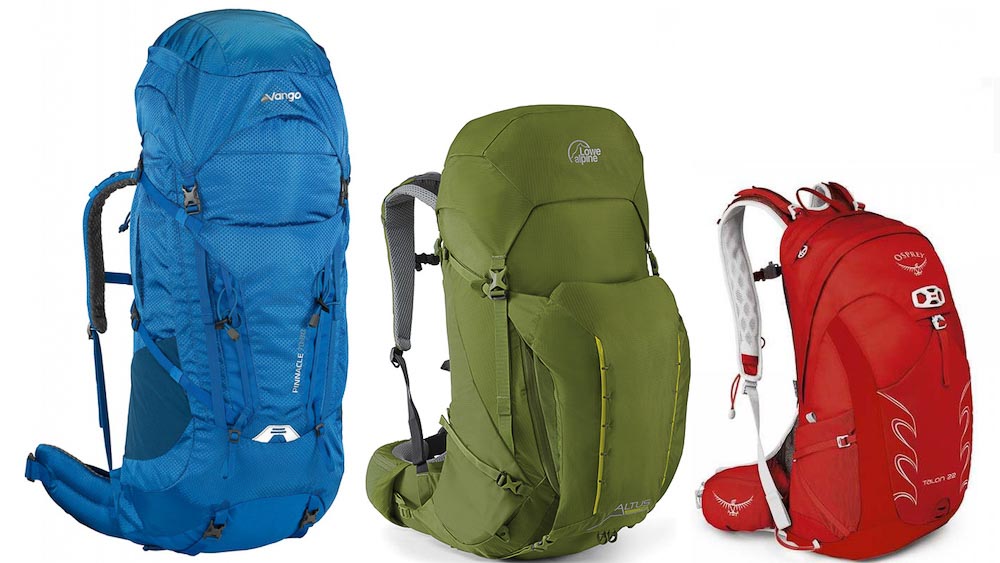Something weird has happened to packs over the past few years – to put it simply, they’ve got smaller. Okay, so they haven’t exactly got smaller, it’s more that the capacity of packs that most of us need and are buying has got smaller.
Why? In really simple terms, the kit we use and, therefore, the kit we carry, has got lighter and more compact. A few years ago, a fairly standard waterproof jacket weighed anything up to 1000g, while these days a typical shell could be half that and, if you’re properly committed to gramme-saving, you can get your waterproof down to 100. Much the same thing has happened to camping kit, insulation, bivi bags – you name it – and all this means that the pack you need is consequently smaller – and probably lighter too. So how big a pack do you need and what else do you need to bear in mind? Here’s what Gearhead reckons along with some thoughts on other factors.
Is the big pack dead?
If you can fit all your lightweight camping and outdoor gear in a 50L pack, who needs a 60L plus big ‘un then? Well, quite a few people as it turns out. For starters, no matter how light and compact your kit, there are limits. Notably if you have to carry multiple days worth of food and fuel and, in the most extreme case, water. In other words, if you’re a US-style wilderness thu-hiker or wilderness backpacker, rather than a weekend wild-camper, don’t go throwing out your big pack just yet. And at the other end of the scale, if you’re gearing up on a budget, like most Duke of Edinburgh Award expeditioners, chances are that your affordable kit is almost certainly also heavy and bulky kit. Like a wise man once said, ‘light, cheap, useful – choose two’. The irony here is that a lot of novices would enjoy their time out a lot more with lighter kit, but good quality lightweight stuff is – and there’s no getting away from it – mostly pretty expensive.
Tip: It’s better to have a slightly larger pack than struggle to fit stuff in and end up with kit hanging off the base and bungeed onto the sides. And remember, food is non-negotiable.
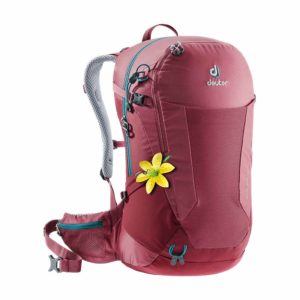
Deuter Futura 26 SL
How about lightweight big packs?
Something else odd has been happening too. Not only are packs for given activities tending to shrink, but they’re also getting lighter. That’s good right? Not always as it transpires. Lightweight packs are mostly light because they use lighter materials and construction. Alloy tubular space frames with built-in flex for example. Thing is, that might be fine for lighter loads with, say, a 30L capacity, but scale it up to 50L and add some heavier kit, fuel and food say, and suddenly your lightweight pack with its minimalist padding and spindly frame can feel disconcertingly flexy and uncomfortable. Our advice: if you’re going to be toting a heavier load, look at a slightly weightier, but more supportive pack.
Tip: When buying a pack, load it up and try it on with the same sort of weight your expect to carry. A good shop with help you here.
The key kit
One final thought. If you’re aiming to save weight and bulk with camping kit in particular, a few key items make the biggest differences. Shelters are crucial. A heavy, bulky tent will take up a lot of space. Likewise, sleeping bags and mats. And finally stoves. But if you want to lighten your load, your shelter and sleep system are the most effective way to start.
Tip A lot of quoted ‘minimum weight’ stats for tents are misleading in that they tend not to include everything you really need to pitch in the real world. Check the wording carefully and look for independent reviews with real life weights.
So how big a hiking pack do you need?
Assuming you’ve got current, reasonably light outdoor gear, here’s a rough idea of how much pack you need for different uses. Bear in mind that if you carry more kit than the average bear, you’ll need more room, ditto if you happen to take XXL clothing. Stash pockets add effective carrying capacity too as do extendible lids.
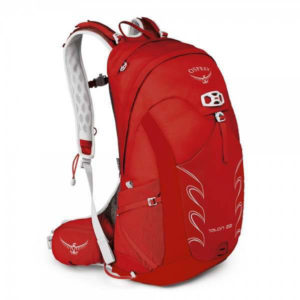
Osprey Talon 22
Summer daypack – 15-25L
For summer use when you’ll mostly be carrying some lightweight insulation, a light waterproof jacket plus snacks and other sundries, most people will be able to manage with a pack of between 15 and 25L in capacity. If you’re going to tote a 3L hydration reservoir, you might want to err towards the upper end of the scale, but with modern lightweight kit, 20L should be about right for most people.
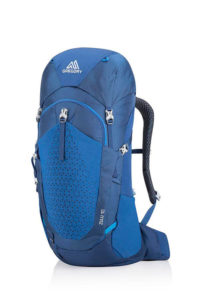
Gregory Zulu 40
Winter daypack – 30-40L
Back in the day, winter daypacks tended to be around 40L or more, but again with insulated clothing, waterproofs and even emergency shelters getting lighter and more compact, it’s quite feasible to get away with a significantly smaller capacity pack. If you’re going to be carrying winter hardware like axes, crampons and, erm, hot soup, you might want to consider added capacity to take these and spare gloves, hats and insulation.
Weekend wild camping and lightpacking/hut-to-hut trekking – 40-55L
Here’s where things get properly variable. The difference between an ultra-lightweight shelter and sleep set-up and heavier one can be considerable in terms of weight and bulk, so if you’re going to be camping that’s your start point. For hut-to-hutting where you’re carrying a sleeping bag and spare clothing, you may be able to get away with an even smaller pack, but you might want to carry slightly more and be more comfortable as a result – a change of clothing for the evening maybe. Or a bottle of wine – decant into an alternative container as appropriate…
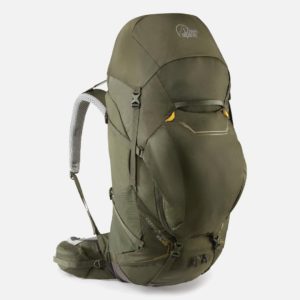
Lowe Alpine Cerro Torre 65:85
Multi-day epics/basic kit camping – 60L+
We’ve covered this already, but the big pack isn’t quite dead yet. If you’re on a multi-day, camping trek/ expedition/epic/DofE expedition with budget kit and a long list of compulsory gear and/or food for a week or so, all bets are off. You need a proper big pack and preferably one that’s supportive enough to cope with heavier loads unless you really enjoy suffering for the sake of saving 500g or so in pack weight.
Gearhead’s cautionary tales
Just to finish things off, here are a couple of cautionary Gearhead lessons learned. Years ago, Gearhead took a super-lightweight Berghaus expedition pack to the Andes for a mountaineering trip. The theory was that wearing extra clothing would compensate for the lack of meaningful padding in the back system. The reality was that carrying ropes, ice-gear, a rack of ice-screws, axes, camping kit and supplies for a week at altitude were so brutally uncomfortable that Gearhead would happily have swapped his ultra-light expedition pack for a more comfortable one that weighed 1,000g more. Lesson: saving weight isn’t always more important than comfort.
And then there was the time, before ultra-lightweight went mainstream, that Gearhead went weekend packing with a 30L pack, just to see if it would work. Skipping across the tops with a minimal load was ace – shivering all-night long in an early spring frost less so. Choose carefully is our advice. And don’t say we didn’t warn you…
USEFUL LINKS
Deuter
Exped
Gregory
Lowe Alpine
Osprey


